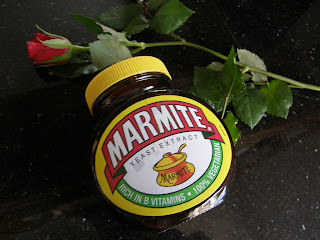Feel the Joy
There are occasions in exploring retirement that I feel I am sampling things so that others don't have to. An example arose this week when I decided to read "The Life-Changing Magic of Tidying," by Marie Kondo.
The KonMari Method and decluttering are now synonymous. Whilst we've probably all heard about her strategy of holding an object to see if it sparks joy, I decided it was time to see if there was anything more that I could learn. Into my 9th year of retirement and, regardless of the progress made, I still wonder if I shall ever reduce possessions to the point where I can give myself a well-deserved "Job Done" and accompanying pat on the back.
Turning the pages, I quickly learnt that the preferred strategy is to get stuck in and aim to complete the task as quickly as possible and in any event in no more than 6 months. Whatever have I been doing for the past 8 and a half years, I wondered? Obviously not putting our house in order once and forever, as she advocates.
Underpinning the whole method is the idea that to avoid negative energy whilst contemporaneously promoting calm and contentment, we should indeed surround ourselves only with those items that bring happiness. Out with the medicine cabinet, Mister E's jar of Marmite and in with the chocolate and wine, perhaps. What about the vaccum cleaner and floor mop? Can they be jettisoned too? What if one by one, I hold everything I possess and never feel the spark? Destined to living my life naked in a bare home somehow doesn't sound very practical.
Finding a good, solid decluttering method for me is like the search for the Holy Grail. It probably doesn't exist, but I'm determined to find it anyway. So driven, I read on.
All I can say is, I found the whole book totally weird. It's written by somebody who became obsessive about tidying at Primary School age and who has continued to refine her method ever since. Remember how we all giggled when it was reported that the present King (Prince Charles as he then was) talked to his plants? This author does too. Moreover, she also talks to her shoes, empathises with the fate of socks and tights screwed up into balls and crammed into drawers and prostrates herself on the floor to thank the house for all it does.
I simply could not relate to attributing possessions with energy and what appeared to be described as an ability, after being rejected and thrown, to reincarnate into another item. Was it all some kind of metaphor for an enormous exercise in consumerism?
There are references to parting ceremonies and celebrations for items as you wave goodbye to them. Retirement parties in the true sense of the word, where the object is thanked for its long service with a few nice words and then hurried out of the door, are described. Objects that are happier and more vibrant after being let go. I can almost identify with that if we really were handing over a gold watch to the long serving employee leaving work for the last time. Projecting human emotion onto inanimate stuff, however, is simply beyond my comprehension. Moreover if anybody thinks I'm making a toast to the next holed tea-towel I demote to my rag box, then they can think again. Redundancy is never a good look if you try to explain it as though you are carrying out a favour, even for my oldest tea-towel.
Continuing to turn the pages, I found the enticement for giving the method a try. Throw items away and you will lose weight; rid yourself of toiletries and you will grow more beautiful; jettison books and paperwork so your mind will become clearer. At least she concedes that there is no scientific basis for such hypotheses, only anecdotal evidence.
Oh and did I mention that it is advocated that we dress up to declutter. At least that way I get to wear all those smart office clothes I've no reason still to be hanging onto, I suppose.












.JPG)








Comments
She is engaging and obviously a believer in her system. Personally, when I am ready to get rid of something it is because it is worn out or no longer fits my needs or lifestyle. It doesn't need a ceremony to go away.